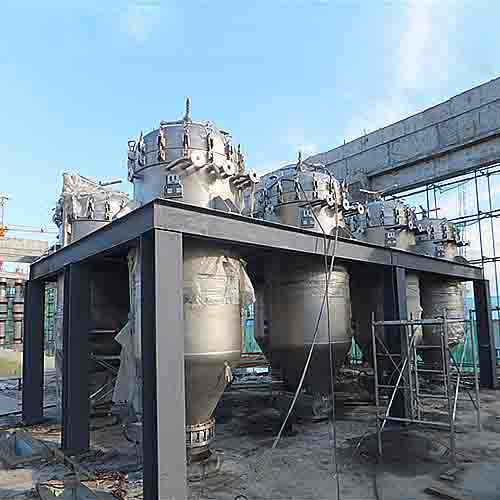The deformation of the pressure vessel seriously affects the rigor and reliability of the use, which in turn affects the safety of the pressure vessel during operation. The manufacturing process and standards must be carefully formulated and strictly adhered to ensure that the quality of the pressure vessel meets the requirements of national regulations and other various regulations. The deformation of the pressure vessel during the manufacturing process is mainly caused by the error in the size of the blank, that in the assembly process, and the shape of the mold. To solve deformation problems, we must start from the following three aspects. The first is to improve the level of cutting, strictly calculate the required materials, and use computer software to assist in the calculation of blanking and management; Second, strictly control the shape of the mold, fully consider the change during and after molding. In the assembly of the pressure vessel, the positioning fixture is used to prevent deformation of the equipment, and the straightness is detected by the theodolite. In the actual operation process, symmetrical cutting or machining is adopted. For the unstable deformation, the opening area can be strengthened by the ribs close to the shell. When the rear casing is in an overall stable state, the reinforcing plate is removed. To avoid heat treatment deformation, set a firewall at the flame nozzle of the furnace wall, and if necessary, reinforce the pressure vessel parts that are easy to lose temperature at high temperatures.
3. Weld problem
During the manufacture of pressure vessels, many components are connected by welding. The arrangement and the quality of the welds directly affect the quality of the pressure vessels. In particular, attention should be paid to weld defects and stress concentration. During the welding process, scrutinize the arrangement, intersection and overlap of the welds. Stress analysis of the pressure vessel is required before the operation, and computer software can be used for assisting calculation. One of the keys to influencing the quality of welding is the professional level of the operators. Therefore, it is necessary to pay attention to the management of the operators, and review the qualifications and related qualifications of them to ensure the certification.
4. Stress Corrosion Problem
Stress corrosion cracking is caused by the interaction of stress and corrosive environment. In the actual operation process, stress cannot be avoided, and there is no way to get rid of the corrosive environment. Therefore, it is necessary to solve this problem from the material itself. When designing a pressure vessel, it is important to fully consider the stress corrosion problems and select suitable materials. In addition, the structure can be treated, heat treated, anticorrosive treated, etc., to minimize the possibility of cracks due to stress corrosion.
5. Hydrogen embrittlement problem
Hydrogen embrittlement, also known as white spots, is a process that the hydrogen dissolved in steel is polymerized into hydrogen molecules, causing stress concentration which exceeds the strength limit of steel, forming fine cracks inside the steel. Hydrogen embrittlement can only be prevented and cannot be repaired because once hydrogen embrittlement is produced, it cannot be eliminated. The higher the temperature, the deeper the degree of hydrogen embrittlement. The higher the carbon content of steel, the more serious the phenomenon of hydrogen embrittlement. To prevent the occurrence of hydrogen embrittlement, metal elements such as chromium, titanium and vanadium can be added to steel, so do corrosion inhibitors. And electroplating, sandblasting and rust removal can all reduce the occurrence of hydrogen embrittlement to some extent.
Nondestructive Testing
After the pressure vessel is manufactured, the quality inspection must be carried out before the finished product leaves the factory. At present, the main detection methods used in China are radiation testing (RT) and ultrasonic testing (UT) for the weld. With the innovation and development of non-destructive testing technology, the results of non-destructive testing are more objective and accurate.


 English
English Español
Español русский
русский